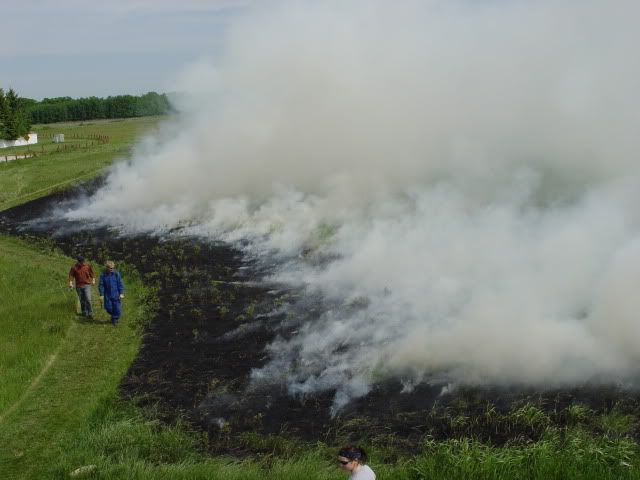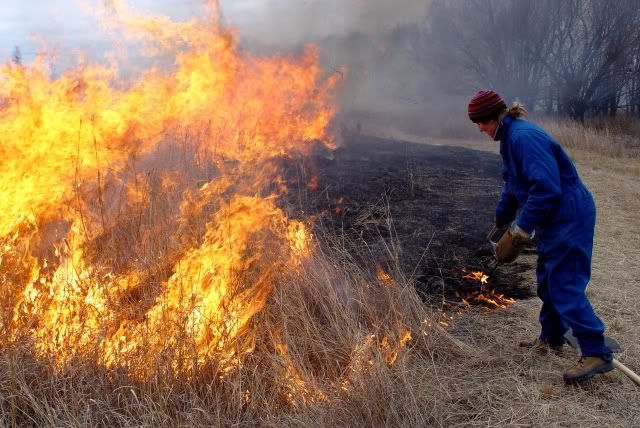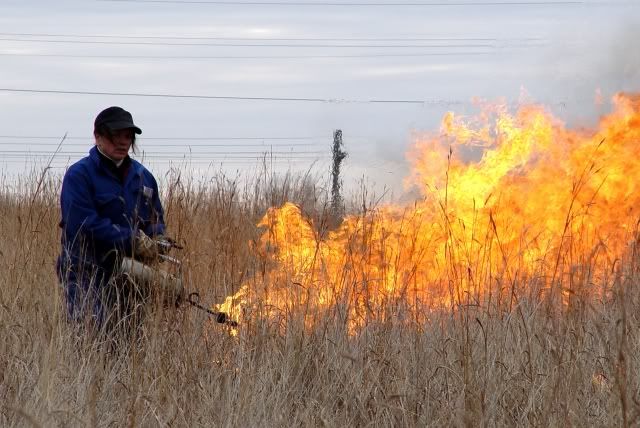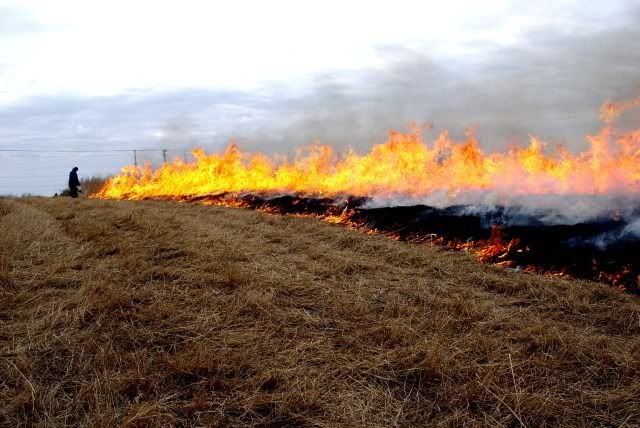| General Discussion Undecided where to post - do it here. |
| Reply to Thread New Thread |
|
|
#1 |
|
|
We have had a couple weeks of dry weather here, the day this fire was set the winds were well over 15 mph, with gusts over 25 mph. Should they have chosen to wait for a day with less wind?
I thought prairie burns were supposed to be small, that burning more than small part of the prairie would harm the populations of birds, mammals, and ephemerals, such as insects and prairie annuals? I also thought the burning should be done a little earlier in the spring, before much has sprouted, and before the birds are on their nests? Several hundred acres burned, several fire departments from the surrounding municipalities had to come out to keep the fire from spreading out of the park.       Illinois Beach State Park, in far northeastern Illinois, on the shore of Lake Michigan, is roughly 2200 acres of beach, dune, sand prairie, and oak savana, much has been set aside as a nature preserve and recreational beach. This is one of the first nature preserves in Illinois to be set up. At least 9 of the 14 or so species of orchid native to Illinois can be found in this park. It looks like this fire was too large and too hot to be more benifical than harmful. It will be interesting to see what recovers and how quickly things come back. |
|
|
|
|
#3 |
|
|
Hey Leo, I know nothing about the ecology of Illinois's dune prairies, but I'd imagine the effect isn't that dire. In Florida (an area I have studied and actually been a participant in controlled burns) fires naturally occur in late spring and extend into mid summer, from May to July. In this case all the plants have already grown and have flower (or are in the process) and all the animals are active and many are raising their young. Except where fires got so hot that they crowned (burned the canopy trees), the result was always positive.
Areas that were overgrown with subcanopy hardwoods and shrubs were suddenly open grassland again, allowing herbaceous species to flower and reproduce. I can't tell you how many orchids "suddenly appeared" after a burn - usually the next spring - Calopogon species, Pogonia ophioglossoides, Cleistes bifaria and C. divaricata, Platentheras of all kinds, Spiranthes, and on down the line. The bigger problem in the states is fire suppression, not burns, at least in fire dependent communities. Mesic forest is a whole other matter. It would be interesting to hear the Illinois park's department and DNR's view on this burn. Do you know if it was a prescribed burn or arson? |
|
|
|
|
#6 |
|
|
|
|
|
|
|
#7 |
|
|
|
|
|
|
|
#8 |
|
|
I did a plant inventory last summer of a field in Pennington NJ for two months to prep for a burn. We were/are going to burn the whole field. A fall or spring burn benefits either grasses or forbes a bit more, respectively (i think thats the order), so I'd imagine this would benefit. The only temporary concern would be the timing for nesting. That I don't know the specifics of for your area.
Please take some more pics over the next few months of the same shots. I'd love to see the succession and to see whether or not it looks successful and your opinions on wildlife abundance and diversity in the area. |
|
|
|
|
#9 |
|
|
|
|
|
|
|
#12 |
|
|
Yes I agree that due caution is in order. Just because a burn is scheduled for a certain date doesn't mean that the date should be carved in stone. When the weather has been too dry and the winds are too high, I think the prudent thing to do would be to postpone the burn.
The Kirtland's Warbler in northern lower Michigan is so rare that it may forever remain dependant on mankind's periodic controlled burns on its behalf. Even now that the Warbler's numbers are increasing, extinction remains a very real possibility. |
|
|
|
|
#14 |
|
|
I too understand your concern. No out of control fire is a good fire. Especially is property gets damaged. With the conditions you described, I am quite surprised they would proceed with the burn (although I think the 5 mph limit is too low...). Seems like the person in charge lacked common sense.
Your right to point out that insect species are important to prairie ecosystems, however, insect populations are quite resilient. The population will crash, however they do recover. Everything you've said is correct about island dynamics. Has your friend done any long term studies on insect population pre and post burn? I would be interested in seeing that research. The burns I conduct are for habitat improvement. To stress non-native plant species and favour native species. The goal is to increase quality and diversity. A well timed fire can have an incredible effect on the prairie. A poorly timed fire will have less of an effect, but always a positive effect. Its hard to comment on that particular fire without knowing the plants and problems of the site, but I think you'll find long term, the fire did way more good then bad. Heres a photo of me (in the blue) conducting a controlled burn a couple of years ago. I'll post more later. 
|
|
|
|
|
#17 |
|
|
|
|
|
|
|
#18 |
|
|
Thanks for your interesting and detailed response Leo. Unfortunately, as ecosystems get more and more fragmented the ability of them to respond and rebound from natural or artificial disturbance is impaired. Each place is unique and has its own specific regime. People who wish to manage such lands indeed should err on the side of caution, but in the end, "island systems" are always at risk and extinction of species, if only locally, is inevitable.
The real upshot here is not so much about management as it is about how we live on this planet and values we hold about it. Personally, I think we need to go to a mosaic pattern - "wild" lands dispersed and interconnected and humans spread throughout. Also, the greening of cities is the primary issue, especially here in Asia where populations are soaring. Exactly how that can be done needs to be researched and explored pronto. The truth is we are running out of time to explore such opportunities since environmental change is coming so swiftly to essentially the whole globe. |
|
|
|
|
#19 |
|
|
Hi,
Don't worry leo, I take no offense to a healthy dialouge about different philosophies, especially from someone as passionate and knowledgeable as you are. Insects are complicated little critters. You are correct that, in theory, you could wipe ot the population by burning the 'island'. These insects (and plants) have evolved with fire, and have ways of recovering. Its difficult to have this argument without having a particular insect or plant species as an example. Of course there are exceptions to fire adaptations. As an ecologist, I concentrate on the health of the ecosystem/habitat. If we talk about rare plant species, habitat degredation is a greater risk to them the the loss of a pollenator, in my opinion. If there are no plants or no healthy plants to pollenate, what have we gained? Remeber most prairie plants are perrenial. they will still be around to be pollenated when the insect population rebound. Also, like plants, some insect population explode right after a burn, what if those insects are the unique pollenator of a species? Fire ecology is such a complex (and beautiful) thing. I know there are negative impacts, but if you look at the big picture, the benifits outway the negatives. Of course thats a generality, there are exceptions. More photos:    Kyle |
|
|
|
|
#20 |
|
|
|
|
|
| Reply to Thread New Thread |
«
Previous Thread
|
Next Thread
»
| Currently Active Users Viewing This Thread: 1 (0 members and 1 guests) | |
|
|






 Linear Mode
Linear Mode


